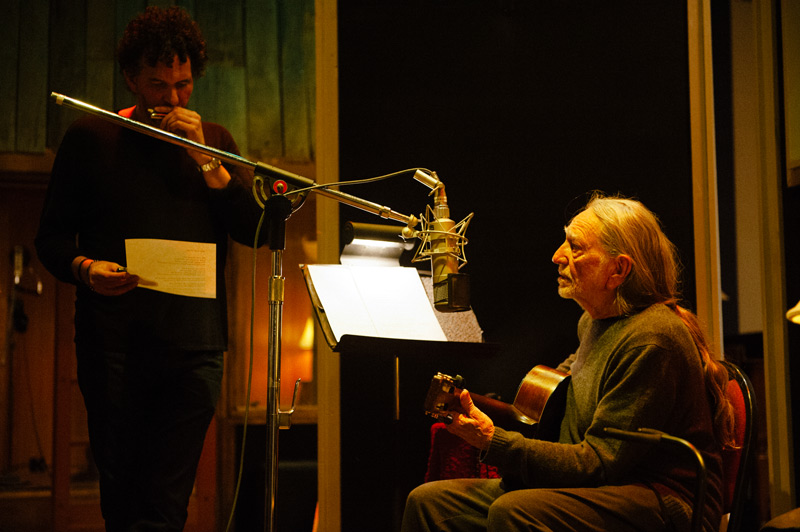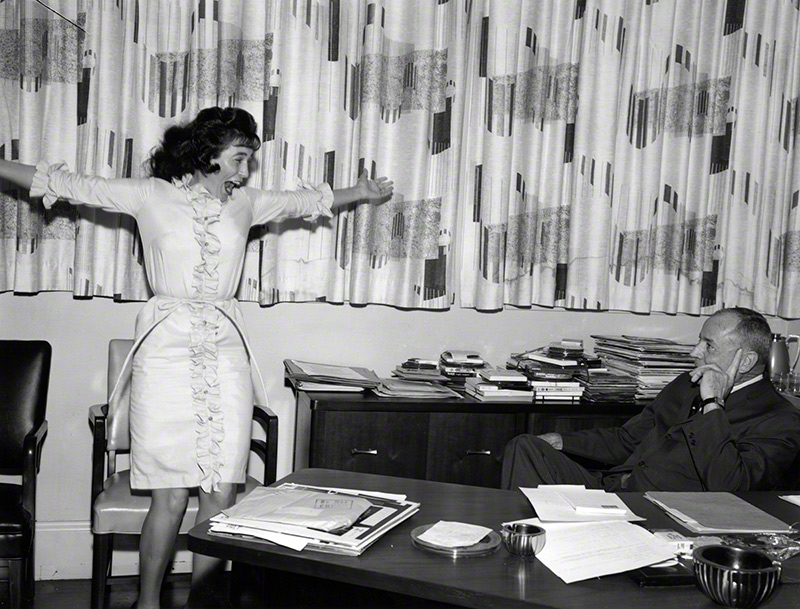Johnny Cash by Leigh Weiner
The Annenberg Space for Photography has a new show called Country: Portraits of an American Sound that presents a back-stage look at the history of country music through the work of photographers who followed the art form over the years. Produced in collaboration with the Country Music Hall of Fame and Museum, the exhibit has some wonderful images — think Minnie Pearl in a studio portrait, June Carter and Earl Scruggs on an early sound stage, and potent portraits of contemporary artists such as Keith Urban and Dolly Parton.
As always with shows at the Annenberg, we learn the most by watching the documentary film that accompanies the exhibition. The film, which focuses on the photographers themselves and is billed as “80 years of country in 30 minutes,” actually does a nice job laying out the history of country music as it changed from the early 1920s until the present day, tracking from hillbilly to rock and roll, describing the influence of Will Rogers and the singing cowboy, and integrating highly produced Nashville studio sound with the rebel reaction of Willie Nelson and Merle Haggard. It was interesting to us, who are not really country fans, to see how the tradition adapted and changed, and how it entered the mainstream with performers such as Garth Brooks.
Willie Nelson by David McClister
Every country singer and songwriter claims that country music is about authenticity. There’s a lot of talk about “all you need to know to write a country song is momma, a train, and going away.” Or, just three chords and the truth. The claim is simply that folks like country because there isn’t such a large gap between what’s on stage and what’s in the audience’s heart. It’s reachable, it’s every day, it’s your people. We didn’t grow up with any affinity for country music (in fact, we were actually embarrassed by it but that could have been because of shows like Hee Haw and The Beverly Hillbillies). But nowadays, kids are as likely to have affection for country music as any other type of music and the mainstream has adopted country as its own.
Some photographers are clearly just plain fans who feel lucky to be in the room with the greats. But, others develop an impactful relationship with the artist and help to create the image that is presented to the public. In the case of Lyle Lovett, his long-time photographer Michael Wilson played a critical role in developing Lovett’s retro-hip image and these portraits seem to stand apart from the others in personality.
Also on display will be country albums and film posters, a slideshow of digital images, archival artifacts from musical instruments to stage costumes and a jukebox containing rare audio files. Woven throughout the Photography Space will be screens presenting short videos including one by Shannon Perich and The Biscuit Factory that gives an overview of the origin of country music; a short film by Henry Horenstein about the legendary Texas music hall the Broken Spoke and additional archival videos.
Of note is a short documentary about Kenny Rogers, who many do not realize was an accomplished photographer, as well as a huge star. He hired a professional photographer to come along on his bus and teach him the basics of shooting, and had a photo studio in Hollywood where he took remarkable portraits of well known musicians.
The Annenberg is always FREE – and as such is an easy adventure to slip into your busy weekend.




